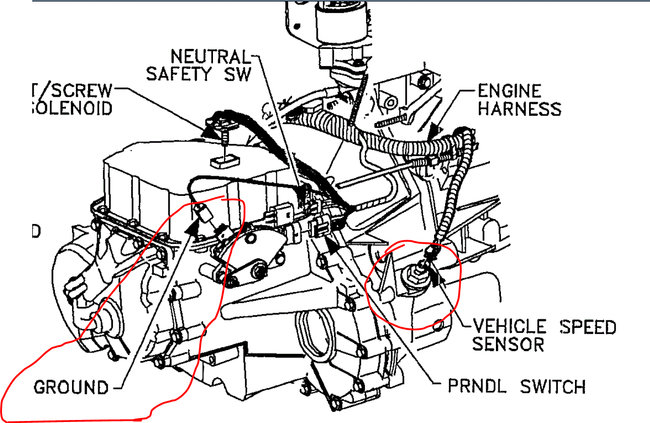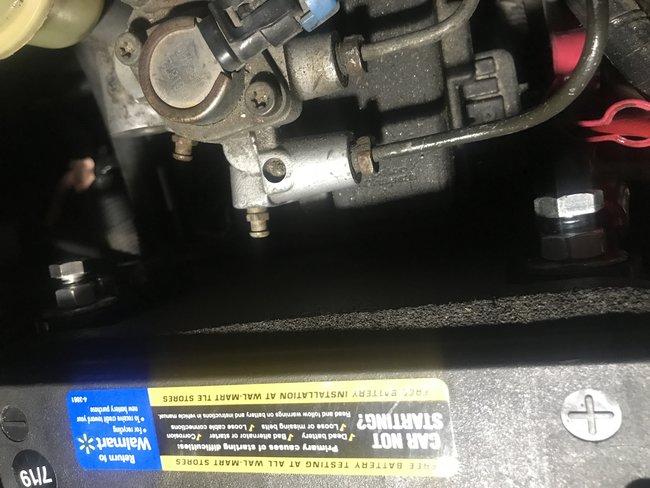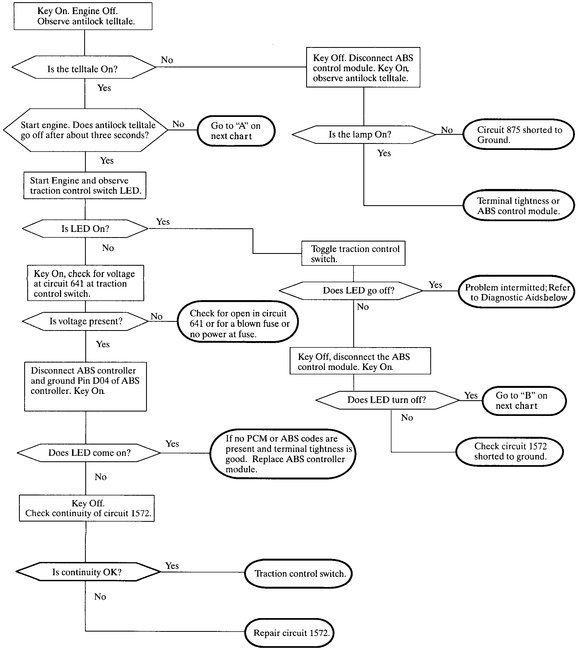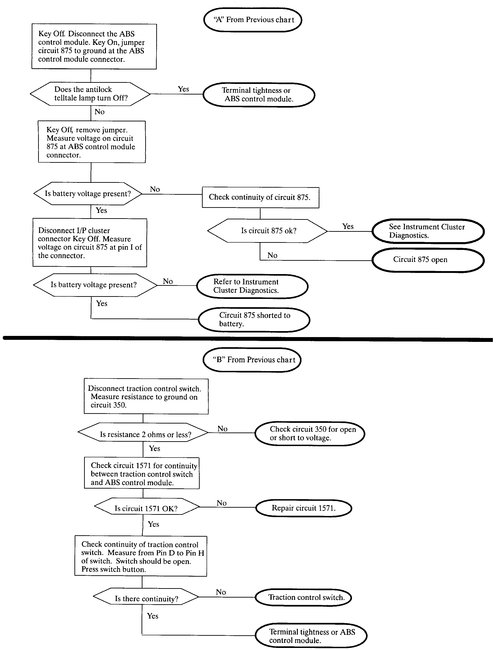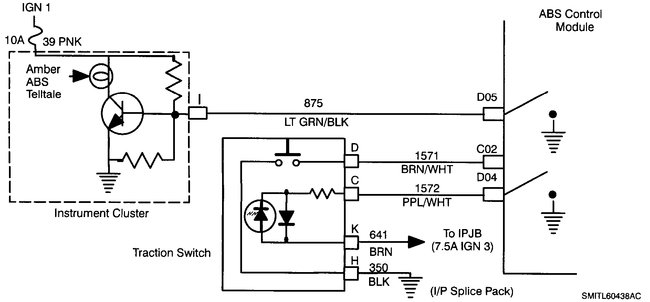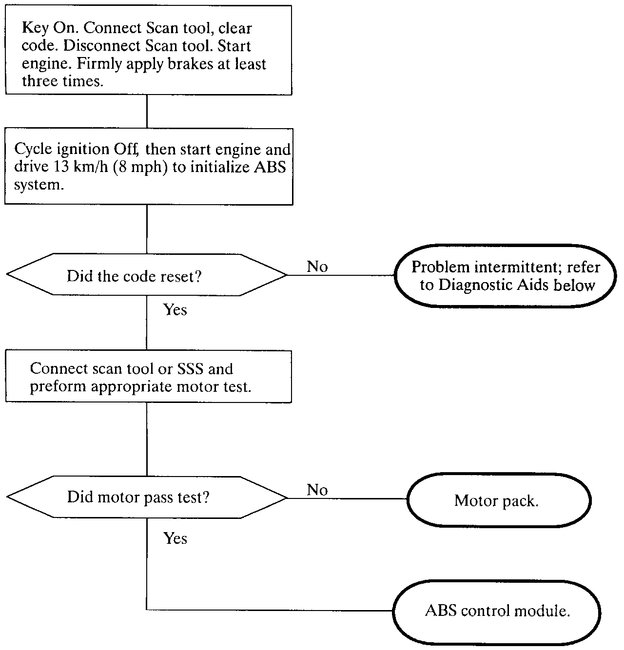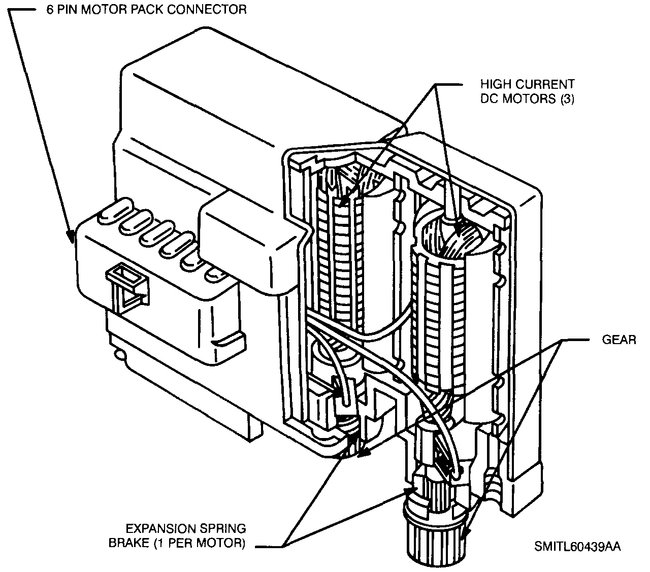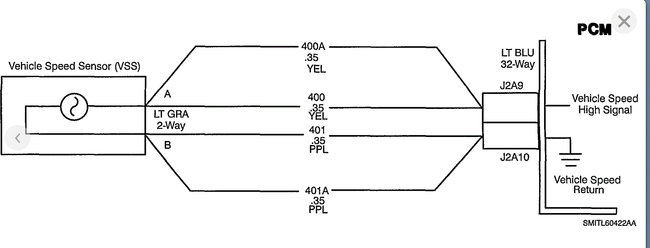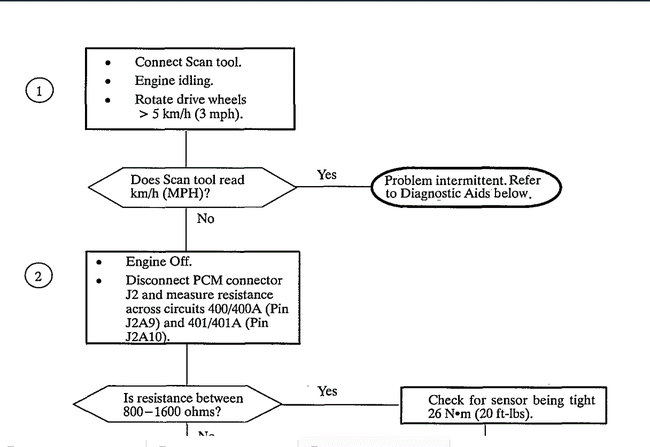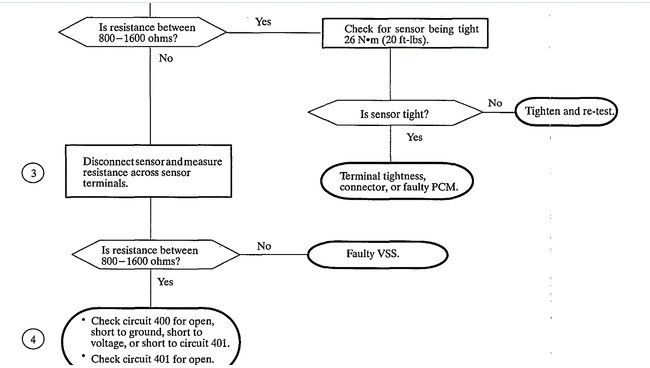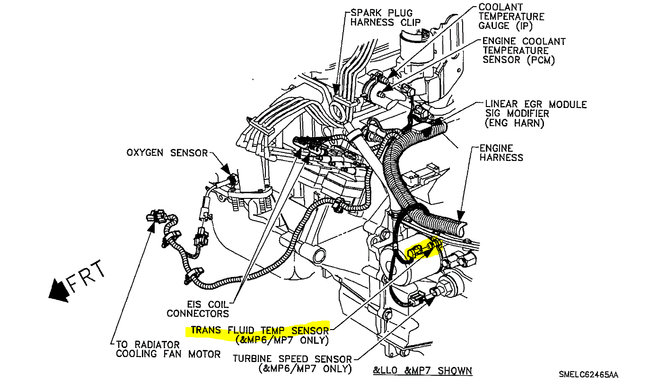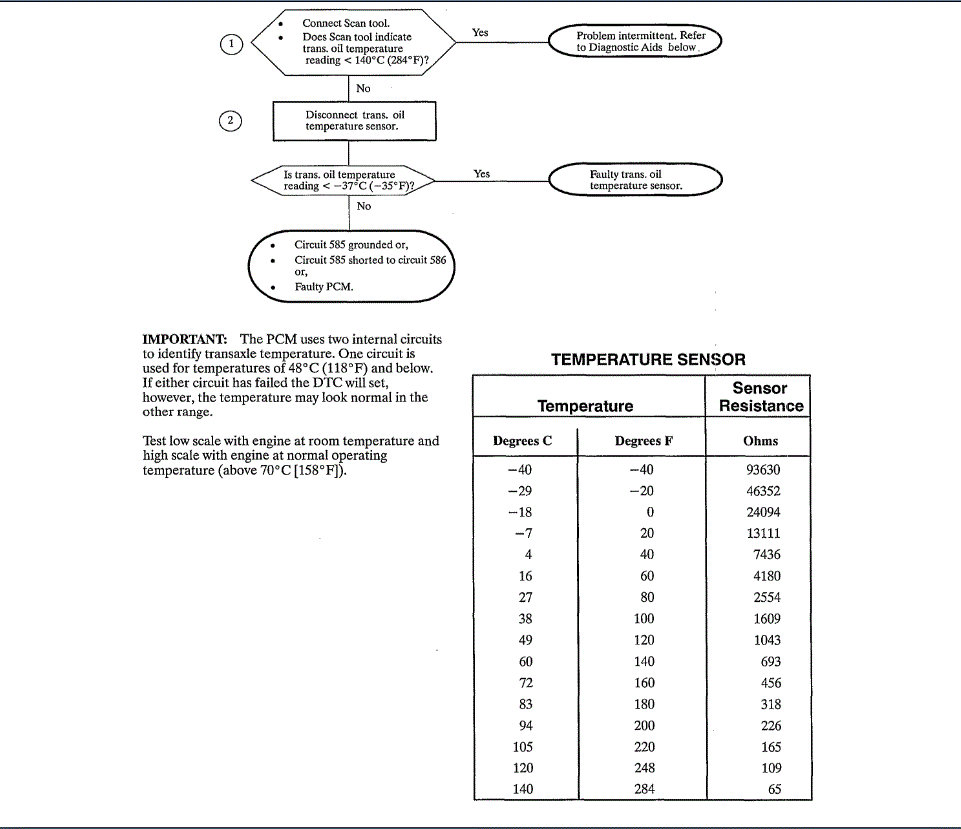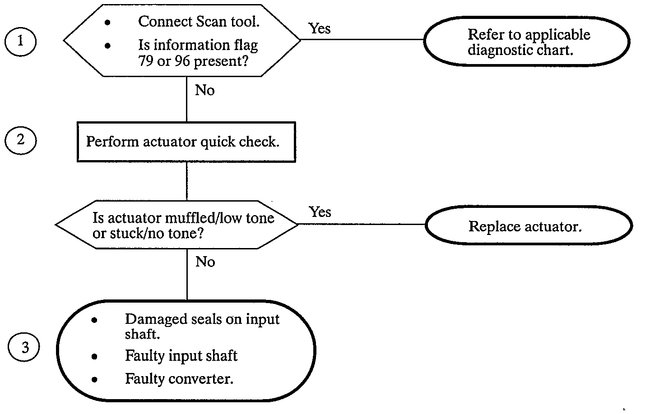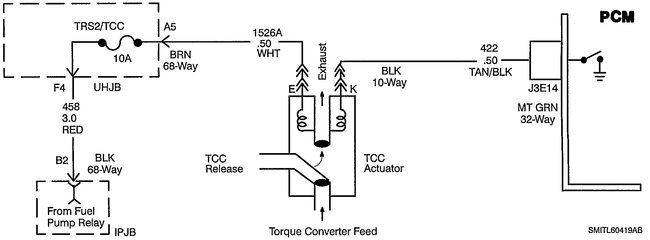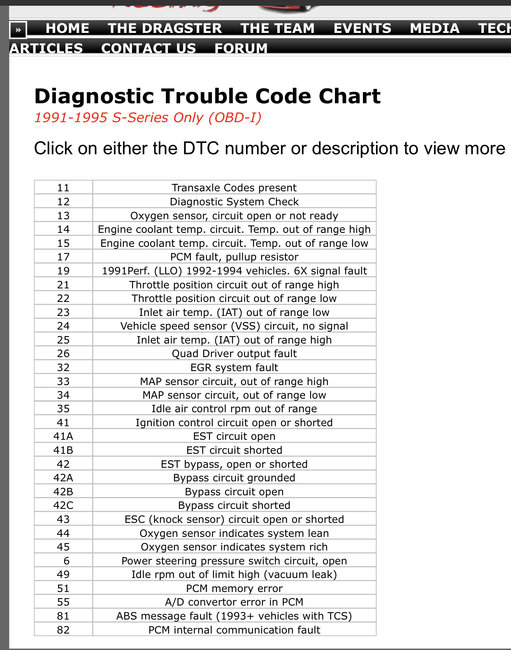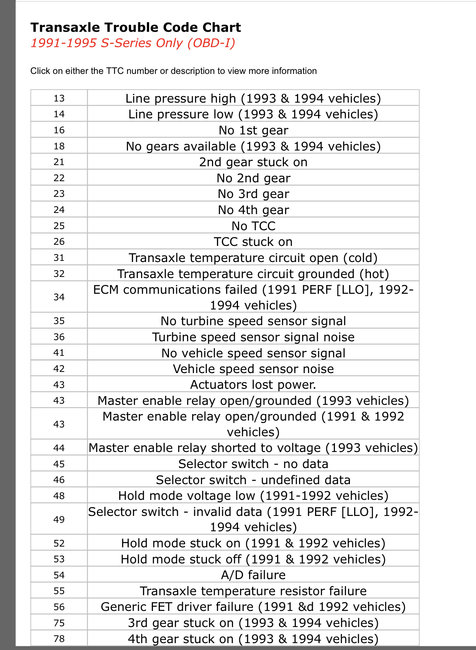Hi,
First, you are very welcome. The two codes that you mentioned can both be related to the transmission. However, the 26 gives me a range of components that it can be related to. See picture 1.
Code 32 is most likely related to the transmission temperature sensor. See pic 2 for location. If you have cleared the codes and they returned, check the connector on the temp sensor. If it is good, replace the sensor. If you want to check it first, here are the test procedures. They coordinate with pics 3 and 4.
____________________________
TRANSAXLE TEMPERATURE CIRCUIT GROUNDED (HOT)
The transaxle temperature circuit monitors transaxle fluid temperature by using a thermistor (sensor) located in a transaxle pressure port near the pressure filter. Sensor resistance will increase as temperature decreases and decreases as the temperature increases. The PCM/TC supplies a five volt signal to circuit 585 and monitors the voltage on the internal signal line as it varies up and down with circuit resistance. The voltage value on the signal line is converted to a temperature value.
DTC PARAMETERS
DTC 32 is set when the PCM/TC has detected the following conditions for longer than 30 seconds.
Engine coolant temperature below 100°C (212°F).
Sensor reading is above 140°C (284°F).
TEST DESCRIPTION
Numbered steps below refer to numbered steps on chart.
NOTE: High temperature equals low sensor resistance.
1. This step verifies the problem is still present. If Scan tool indicates temperature is less than 140°C (248°F) the conditions for DTC 32 are not currently present.
2. This step simulates a DTC 31 - Transaxle Temperature circuit Open (Cold). If the PCM recognizes the high signal (low temperature) and the Scan tool reads less than -37°C (-35°F) the PCM and wiring are OK. With IGN on five volts at sensor harness terminal for circuit 585 indicates PCM and circuit 585 are OK.
DIAGNOSTIC AIDS
When attempting to diagnose an intermittent problem use the Scan tool[1] to review supplemental diagnostic information. The supplemental data can be used to duplicate a problem.
Check the tightness of the female terminal grip with a spare male terminal.
DTC 32 is not set on overheated transaxle. That would cause information flag 15 Hot Lamp illuminated to set.
[1] Select Malfunction History from Scan tool TCM menu.
___________________________
As far as the 26, if I look under transmission, here is what is listed.
1995 Saturn Sedan L4-1.9L DOHC VIN 7
Transmission Controls With PCM
Vehicle ALL Diagnostic Trouble Codes ( DTC ) Testing and Inspection Manufacturer Code Charts DTC 26 Transmission Controls With PCM
TRANSMISSION CONTROLS WITH PCM
Diagnostic Chart
pic 5
Circuit Schematic
pic 6
TCC STUCK ON
When TCC is commanded off, the engine speed to turbine speed ratio (delta) is monitored to assure TCC is off. TCC stuck on indicates that TCC was commanded off but the actual ratio (delta) across the torque converter, (engine speed/turbine speed), is one to one or TCC on. TCC is turned off by opening circuit 422 at the PCM/TC. A TCC stuck on will usually cause the engine to stall when reverse is selected.
DTC PARAMETERS
DTC 26 is set when the PCM has detected the following conditions for more than four seconds twice per ignition cycle.
Engine speed greater than 908 rpm.
Turbine speed is between 224 and 2800 rpm.
TCC is commanded to release for more than 0.25 seconds.
Load value (engine torque) is greater than 100.
Speed delta (engine speed - turbine speed) across torque converter is less than 84 rpm.
TEST DESCRIPTION
Numbered steps below refer to numbered steps on chart.
1. Check for information flags 79 or 96. They must be eliminated first as a possible cause of DTC 26.
NOTE: Prior to performing actuator quick check, the fuel pump probe hole must be connected to 12 volts. See "Actuator Quick Check" procedures. See: Automatic Transmission/Transaxle > Component Tests and General Diagnostics
2. Check actuator operation. The actuator quick test will PWM the actuators at a set rate. Listen and compare the noise of TCC gear actuator to that of other actuators. The noise of all should be similar.
3. The TCC release circuit may be leaking at the seal ring on the input shaft. This would allow release pressure to leak off to converter out circuit or lube circuit. Also a remote possibility is the ball pressed into the input shaft is loose.
DIAGNOSTIC AIDS
When the PCM detects a fault in the circuit (open, ground, short), the PCM will open the circuit internally to protect the circuit.
The TCC may be detected as- stuck on when the transaxle is put into drive range. If TCC is stuck on at start-up, a stall may occur, and after a restart it will result in a 3rd or 4th gear start.
___________________________
Let me know if this helps.
Joe
Images (Click to make bigger)
Sunday, March 15th, 2020 AT 5:37 PM
